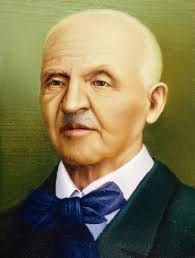The History of Symphony No. 7 in E Major by Anton Bruckner
Anton Bruckner’s Symphony No. 7 in E Major stands as a monumental achievement in 19th-century symphonic literature. Composed during a period of personal and artistic maturation, it is arguably Bruckner’s most popular and frequently performed symphony. Rich in spiritual depth, grandeur, and architectural clarity, the work also marked a turning point in Bruckner’s reputation during his lifetime.
A Turning Point in Bruckner’s Career
Bruckner composed his Seventh Symphony between September 1881 and September 1883, while living in Vienna. At this time, he was an underappreciated figure, often criticized by the musical establishment for his idiosyncratic style. Yet, he remained undeterred, continuing to draw inspiration from his devout Catholic faith and his admiration for composers such as Richard Wagner.
The Seventh emerged from this struggle as a deeply personal and expressive work. It was dedicated to King Ludwig II of Bavaria, a well-known patron of Wagner. The symphony would become Bruckner’s breakthrough composition, propelling him from relative obscurity into public acclaim.
The Wagnerian Influence
One of the defining aspects of Symphony No. 7 is its direct connection to Richard Wagner. Bruckner held Wagner in the highest regard and considered him a divine figure in the world of music. During the composition of the symphony’s second movement, the Adagio, Bruckner reportedly had a premonition of Wagner’s death. Indeed, Wagner passed away on February 13, 1883, during the period Bruckner was working on this movement.
As a tribute, Bruckner scored the Adagio with four Wagner tubas—a rare and solemn addition to the orchestration. The result is a movement filled with profound grief and spiritual reverence, often seen as a funeral ode to his musical hero.
Structure and Highlights
The symphony follows the traditional four-movement structure, but Bruckner infuses it with his unique sense of scale and pacing:
- Allegro moderato – Opening with a majestic theme in the cellos and horns, this movement is both lyrical and monumental, unfolding with the organic logic of Bruckner’s signature architecture.
- Adagio: Sehr feierlich und sehr langsam – This slow movement is the emotional heart of the symphony. The use of Wagner tubas and the mournful melodies express deep reverence and mourning.
- Scherzo: Sehr schnell – Marked by rhythmic vitality and energetic orchestration, the Scherzo provides a dramatic contrast, with a more subdued Trio section offering a moment of lyricism.
- Finale: Bewegt, doch nicht schnell – The final movement draws the symphony to a triumphant and resolute conclusion, revisiting earlier themes and culminating in a powerful affirmation.
The Premiere and Its Success
The premiere of Symphony No. 7 took place on December 30, 1884, in Leipzig, conducted by Arthur Nikisch. It was an immediate success, receiving enthusiastic applause from both audiences and critics. This was a rare and significant moment in Bruckner’s life, who until then had struggled with public recognition.
The performance marked the first time a Bruckner symphony achieved widespread acclaim upon its debut. Encouraged by this reception, Bruckner saw his reputation rise steadily in the years that followed.
Legacy and Influence
Bruckner’s Seventh Symphony has remained one of his most celebrated works. It is praised for its emotional depth, innovative orchestration, and spiritual resonance. The symphony has been championed by prominent conductors such as Wilhelm Furtwängler, Herbert von Karajan, and Günter Wand, helping cement its place in the core symphonic repertoire.
Unlike some of his other symphonies, which underwent multiple revisions and suffered from interference by editors and publishers, the Seventh has been preserved largely in its original form. This contributes to its standing as an authentic and undiluted expression of Bruckner’s artistic vision.
Conclusion
Anton Bruckner’s Symphony No. 7 in E Major is more than just a masterpiece of symphonic writing—it is a deeply human and spiritual document. It represents the triumph of personal conviction over public doubt, and it continues to move audiences with its grandeur, solemnity, and transcendent beauty. For listeners and musicians alike, the Seventh Symphony remains a towering testament to the power of faith, music, and perseverance.


Comments are closed